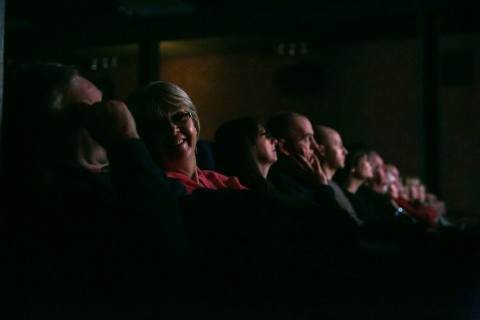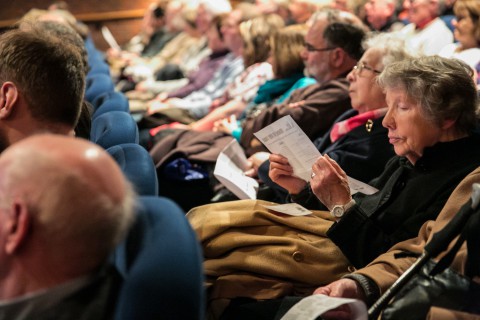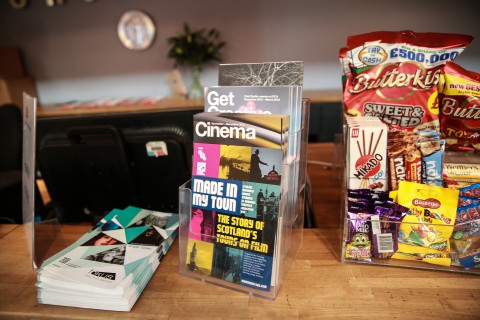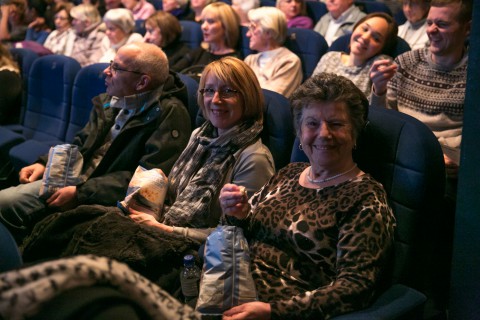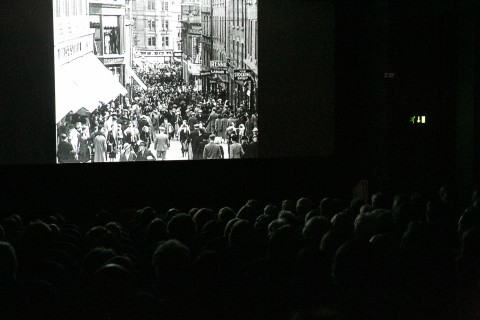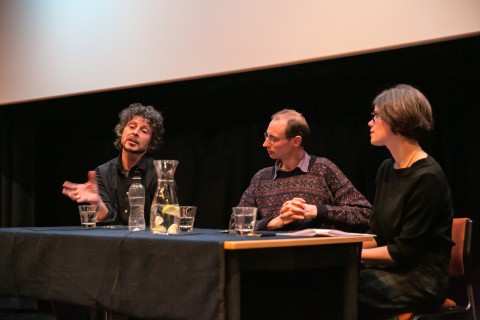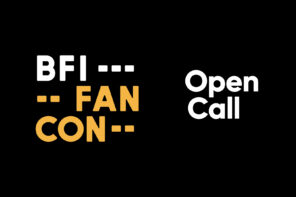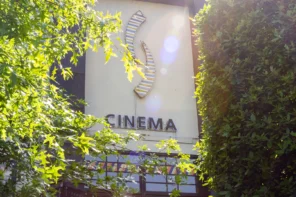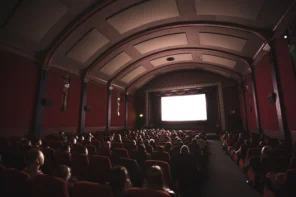Made in My Toun was a tour of national and local archive films with panel discussions or ‘blethers’ in Stirling, Inverness, Dundee, Aberdeen, St Andrews, Greenock, Livingston and Ayr.
Summary
Reactions to Made in My Toun showed that archive film can play a larger part in our lives, especially in places where other artforms are less accessible.
The films on the tour provoked strong reactions, as the modern towns and cities we all know are thrown into sharp focus by what could be described as nostalgic urban portraits. Recognition across audiences of civic loss and/or of progression since the films were made demonstrated a deeper engagement with the films, their subjects and our response to them.
The post-screening 'blethers' provided a real context for the films and all of the filmmakers involved in the events appreciated the opportunity to share their thoughts and expertise with audiences.
Project aims
Offer existing and new cinema audiences, as well as filmmakers, an opportunity to put their town or city on the map through film programmes and discussions tailored to the screening location
Celebrate and harness local knowledge around archive film
Deepen existing engagement with diverse film programming
Inspire exploration of Scottish and UK archive film collections
Profile the accessibility of archive film resources
Encourage positive, proactive participation with filmmakers and archivists
Headlines
Final audience figures across the tour reached nearly 900 people - twice as many as originally projected
Survey data shows 82% of respondents were visiting the venue for the first time
Archive films being shown in the place where they were made stimulated interest in local media which ensured excellent local media campaigns raising the profile of the tour
Successful partnership working on promotion with tour venues led to the largest number of survey respondents (30%) finding out about the event via venue brochure/leaflet
Having a dedicated website for the tour was hugely helpful to direct traffic to book tickets and consolidated the strong branding – www.madeinmytoun.com attracted over 3,400 users across the tour period
Films
There were 15 films screened as part of Made in My Toun, including one of the 1938 Empire Exhibition films made under the supervision of John Grierson and a wide range of sponsored films supported by the Films of Scotland Committee, such as Silver City, Livingston - A Plan for Living and Ayr from the Auld Brig.
Key partnerships
Film Hub Scotland were our project delivery partner and valuable moral support.
Venues: I brought the momentum and tools (print, tweets, content) and they brought the local knowledge promoting it through the usual outlets familiar with their loyal audiences.
National Library of Scotland Moving Image Archive: facilitating film curation, licensing, attending events as panel guests, promoting through their networks and supplying still images and screening materials.
Scotland’s Urban Past: this five-year Scotland-wide project managed by Historic Environment Scotland was a perfect fit for the tour and the enthusiastic SUP team provided guests, films, volunteer event support, and promotion
Budget in brief
£5700 was awarded from the BFI Britain on Film programme fund with match funding from box office income and in-kind support from venues.
What worked
Spread of locations and programming avoided any clash of audiences
Wonderful participation of guests, all of whom were pleased to be part of the events and each made major contributions to the conversations
Programme note ensures audiences have an aide memoire and the links to continue watching films online
Excellent survey completion rate, particularly in Ayr
The tour marketing plan was extremely successful
What has been difficult
Holding the blether in cinema spaces makes two-way conversation with the audience very difficult: the space is specially designed for one-way communication and audiences are familiar with walking into a cinema to receive and not to necessarily transmit (e.g. ask questions)
Two venues weren’t able to provide microphones which led to a couple of negative comments about difficulty in hearing the blether, particularly considering some of the audience had hearing impairments.
The amount of curation and project management time was underestimated.
What you would do differently if you did it again
Move blethers into spaces more conducive to sociable conversation
Permanent cinemas might be supported in hosting more discussions around film through additional equipment such as PA system/microphones
It became clear that each venue needed to be individually tailored – the reason why audiences were attending – so more time is required to liaise with venues, guests, partners, and media
Awareness / Attitudes
There are interesting possibilities of how archive film can feed into charettes and urban planning consultations. The films on the tour provoked strong reactions as the modern towns and cities we all know are thrown into sharp focus by what could be described as nostalgic urban portraits. In a number of cities, strong sentiment was felt by inhabitants who had moved away and returned to the city.
Knowledge & Experience
Discussions around past modes of production were just as important as what the films mean to us now. Indeed having this background enhanced the viewing with some very informed audience questions around how shooting ratios have changed since the days of celluloid, and comparison with digital production techniques nowadays. This led to conversations about modern representations of our towns and cities (e.g. The Scheme television series) made possible by greater access to digital cameras and editing equipment.
Social Cohesion
Recognition across audiences of civic loss and/or progression since the films were made demonstrated a deeper engagement with the films, their subjects and our response to them. Showing films from 2014 didn’t preclude them from being classed as archive – a category that audiences accepted as about documenting a place. One of the 2014 films I showed in Livingston was about a skate park that a group of local young people had campaigned hard to raise money for. The youth club’s leader attended the event as a guest and contributed from the audience. His feedback is an excellent example of how perceptions changed:
“It was wonderful to have seen some of the older films, and is testimony if you don’t have some way of recording history then it is potentially lost forever. These people were pioneers and visionaries and inspirational figures. This has got me thinking of better ways of recording our work at the project. Hopefully in this day and age of social media it should not be so problematic, but expert help is sometimes needed.”
What audiences said
Very good evening. Will come to more.
Films were very well presented, hope to see more in the future.
Incredibly informative, making you aware of your local and national heritage. Encouraged to see large local audience. Prompts discussion and nostalgia.
I really enjoyed seeing the historical films of Scotland. I find them very interesting and informative.
I would suggest that this highly valuable archive material is shown in state schools; children should see these films and be encouraged to discuss.
The films were exciting and beautiful. Wonderful. Want to see more of these films.
Interesting, enlightening - a good provocation for more
What professionals, press and partners said
“I hope you think that Thursday was a great success, as I did, and so did everyone I spoke to - including some who couldn't get in! I was sorry about that, but it just emphasised the success. It was wonderful to see the little cinema full and to know that even more people wanted to see the films” Filmmaker guest
“Wonderful presentation. You’re not only providing a remarkably entertaining programme, but also a great educational and social experience. I think it’s been a fabulous initiative and hope you will run something similar in the future.” Filmmaker guest
Press coverage
http://www.bbc.co.uk/news/uk-scotland-highlands-islands-34585020
http://www.thenational.scot/culture/made-in-my-toun-gives-scots-the-chance-tosee-rnlocal-landmarks-on-the-big-screen.9507
http://www.pressreader.com/uk/the-courier-advertiser-dundeeedition/rn20151113/283240211896780/TextView
http://www.originalfm.com/news/1950s-aberdeen-tourism-film-the-silver-city-toscreen-rnat-belmont-picturehouse
https://www.pressandjournal.co.uk/fp/news/aberdeen/762422/fri4sat-travellingfilm-rnfestival-will-shine-a-light-on-aberdeens-past/
http://www.fifetoday.co.uk/news/local-headlines/town-chosen-to-help-reel-in-theyears-rn1-3959679
http://www.falkirkherald.co.uk/news/local-news/town-chosen-to-help-reel-in-theyears-rn1-3959679
http://www.dailyrecord.co.uk/news/local-news/step-back-time-archival-film-rn7171343#sFD1shwvzaBrmhVH.97


